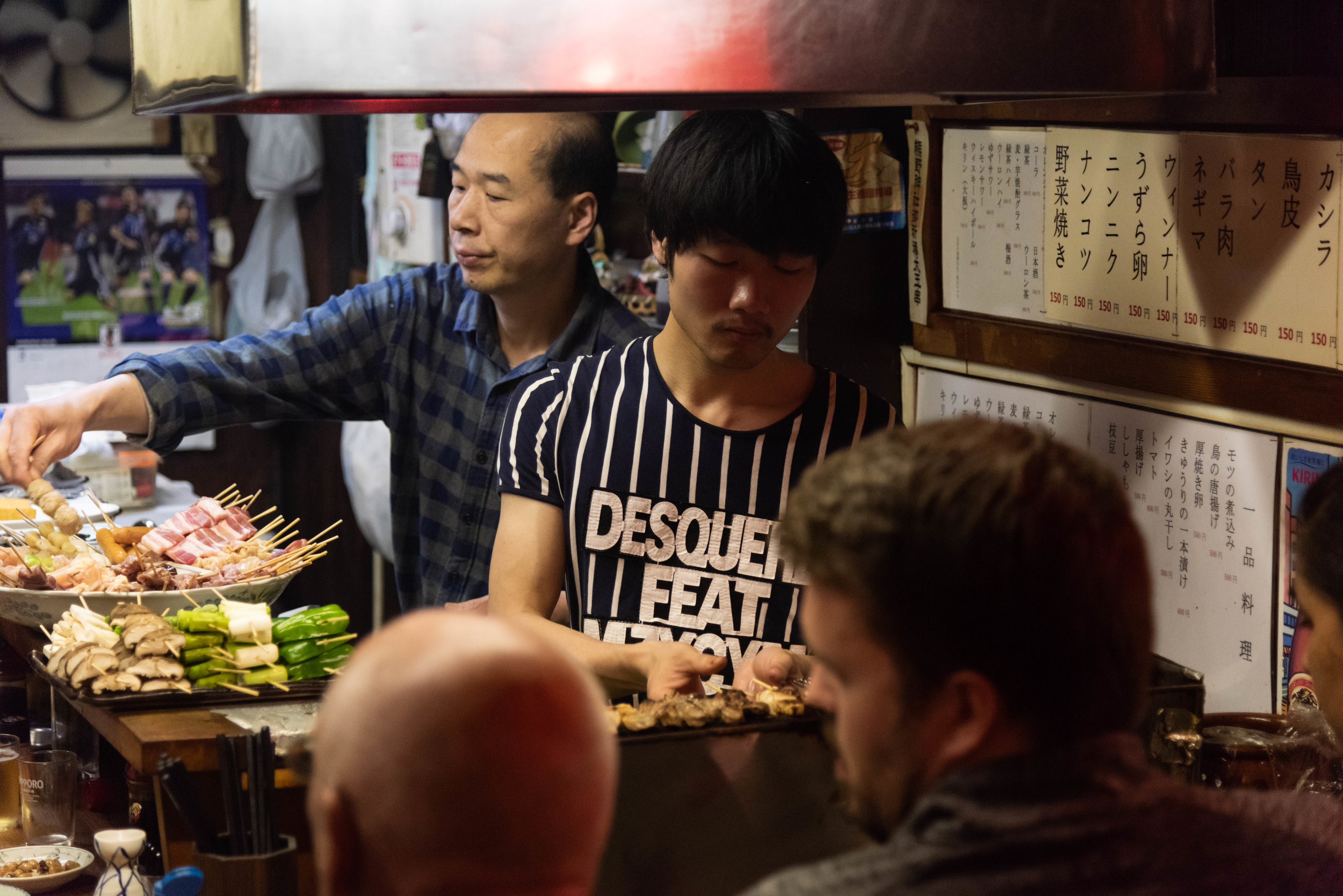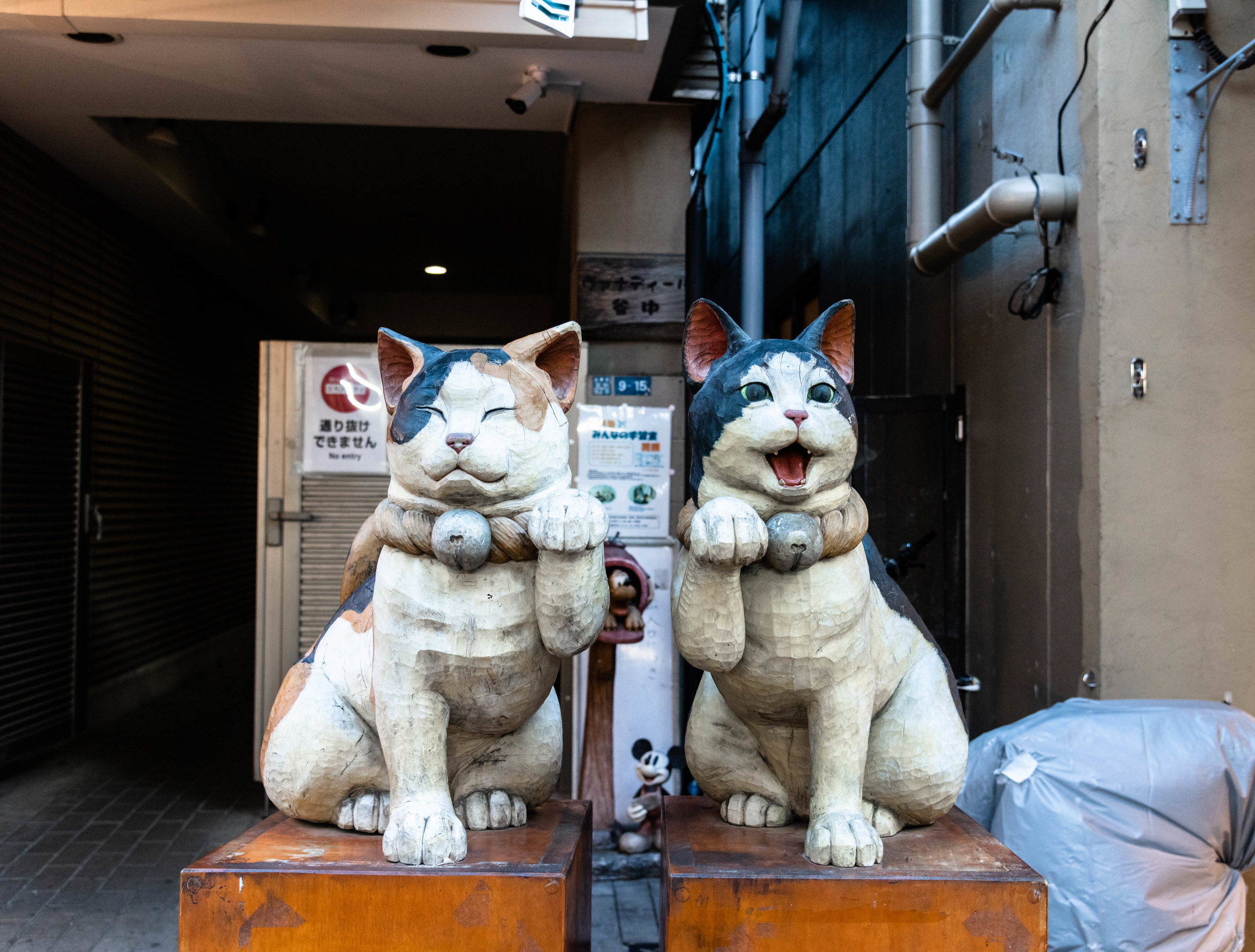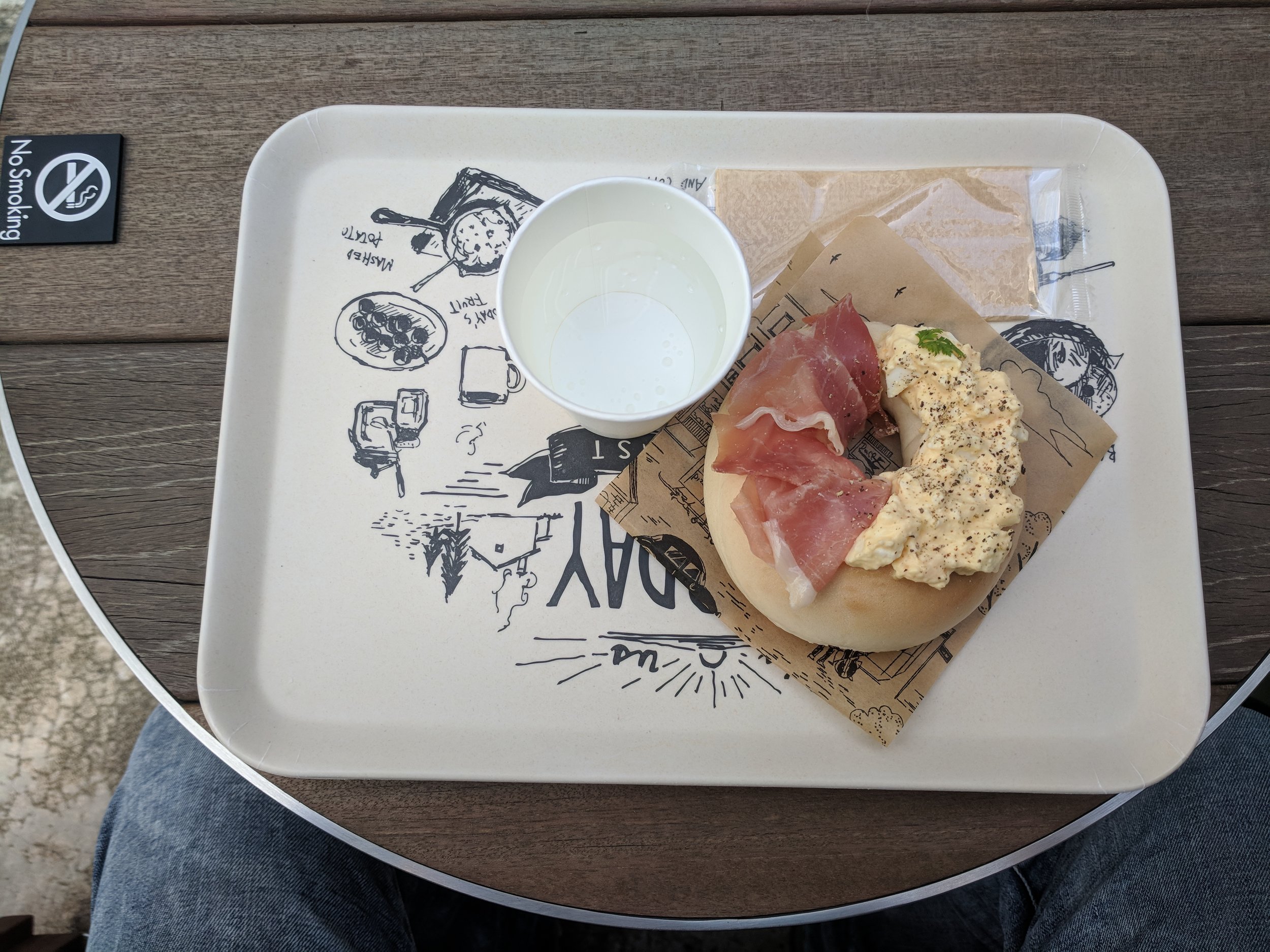Captured by: Amir Dakkak
Tokyo’s spirit and energy is truly awe-inspiring. It’s a place that is so urban and fast-paced, yet one can’t miss the traditional charm it beholds. Inspired by fellow wanderer Amir Dakkak’s incredible travel stories, I set out to discover this city he spoke so fondly of. Within just a few hours of landing my feet on Tokyo ground, I too was absolutely smitten and captivated by its magic. The city has so many nooks and crannies to discover that go way beyond its neon lights and noise. So in efforts to share this adventure with fellow wanderers, here are Amir and I’s 2 fils on how to Tokyo.
THE AIRPORTS
There are two airports in Tokyo: Haneda and Narita. Haneda is definitely the winning airport if one has the option of choosing. It is 20KM close to the city center as opposed to Narita which is about 80KM away.
HOW TO GET AROUND
Japan Rail Pass: This is a great and cost-efficient way to get around Japan and is valid for all the JR Group railways and buses which include select Shinkansen bullet trains, local JR Trains, and local lines of the JR Bus. This is a pass that you can buy as a foreign tourist visiting Japan for sightseeing and have “Temporary Visitor” stamped on your passport. It’s something you should consider if you’re planning on visiting more than 1 city in Japan. You can buy the pass in advance prior to arriving in Japan, and activate it once you get there. There are 2 types of tickets you can opt for: 1) Superior-class Green Cars 2) Ordinary Cars. Each of these types is available as a 7-day, 14-day, or 21-day pass depending on the length of your stay. For those traveling from Dubai, you can buy the JR pass here in Dubai from H.I.S Travel Agency located in Al Hawai Tower in Sheikh Zayed Road. The building is just after the Towers Rotana Hotel, before Applebees. 7th floor office 701. phone: 04 329 5776. Once purchased, you can activate it at the airport upon arrival or at your convenience from select exchange offices after showing your ticket + passport with the visa type showing as “Temporary Visitor”. Once activated and to be used for a JR ride, all you have to do is simply show it to the conductor or station attendant next to the gates to enter. You won’t have to scan it.
Travel Tips: make sure to have your passport with you when activating as it can’t be done without. Also, always check for the pass validity as there are some exceptions, and the JR Pass is not valid for use on other non-JR operated trains, subways, and buses that you’ll also use to get around the city (more on that below).
Trains and Subways: The trains and subways in Tokyo are probably the best in the world and the most efficient way to get around the city when walking is not an option. They’re clean, people respect your personal space (unless it’s during rush hour, then God help you), and more often than not, they’re very quiet. Users can opt to buy an individual ticket for the trip or better yet, buy a prepaid Suica Card. The Suica card is one that you can top up at any of the many top up machines at stations. It avoids the hassle of buying a ticket every time you want to use the trains.
Captured by: Amir Dakkak
Captured by: Amir Dakkak
Buses: This is another efficient and easy way to get around the city. A Suica card can be used to pay the bus fare as well!
Walking: This is probably the best way to truly experience the city and its chaos whenever possible. So walk until your feet hurt, then opt for an alternative.
Travel Tips: Wherever you’re going, make sure to look up the route on Google Maps in advance and screen-shot which trains and buses to take if you don’t have WiFi access when out and about.
WHERE TO SLEEP
Recommended districts: Shinjuku, Shibuya, and Ginza.
Book a room at the Park Hotel if you want to spring a few extra yens for the breathtaking views of Tokyo Tower and Mount Fuji. Make sure to ask for a room with the best view as not all views have been created equal. The hotel also provides the option of booking one of their ‘artist rooms’ on the 31st floor which have been painted by local artists contracted to draw murals all over the walls. From murals of the bamboo forest to murals of Mt. Fuji, you’re in for a magical time.
Stay at the Oakwood Premier Tokyo Furnished Apartments if not for the prime location and fantastic service, then for the very spacious rooms relative to standard Tokyo hotel room sizes. Prices can be pretty steep during high season, so best to book in advance.
Travel Tips: To get to your hotel, you can either take the trains (JR or non-JR) from the airport you land in to a train station near your hotel OR you can sign up in advance for an Airport Limousine Service which stop at many bus stops and hotels in the city. Also, it’s a good idea to print the hotel address in Japanese as it will help if you take a taxi or if asking for directions.
WHAT TO SEE & DO
If you’re lucky enough to visit Japan during the sumo tournament season, you should definitely make the effort to watch 1 of the 6 annual sumo tournaments. Alternatively, you can catch the wrestlers in training off-season. It was incredible to read up on the sport beforehand and learn that sumo wrestling actually has religious Shinto origins and most of the time that the wrestlers are in the ring is actually spent performing religious rituals.
Shibuya Crossing is one of the world’s busiest intersections and is truly incredible to witness at night surrounded by the city’s neon lights. During rush hour, you’ll see hundreds of people crossing the district’s intersection from all 4 angles. Hearing that, you’d imagine it to be completely chaotic and a major invasion of personal space, yet it almost feels orchestral. You can catch a bird’s eye view of the crossing from the top of a building called Magnet by Shibuya 109 which has an epic viewing platform from its roof. Free to enter.
Captured by: Amir Dakkak
The Senso-ji Temple is one of the most famous and oldest of Tokyo’s Buddhist temples dating back to the 7th century. The temple is known for its fortune-tellers so you’ll see visitors frantically shaking containers filled with numbered sticks that lead to their fortune-containing drawers. It’s one of the most visited attractions in all of Japan so it can get very busy at certain times of the day. The temple is preceded by the Nakamise Market which runs from the street straight up to the Senso-ji Temple, and is lined with stalls selling everything from souvenirs to snacks.
Captured by: Amir Dakkak
Captured by: Amir Dakkak
Kabukicho is an area known for its big neon signs and crazy atmosphere at night although it’s really nice during the day as well. An afternoon stroll until after the sun sets is highly recommended so you can capture it during both day and night when the lights turn on. Godzilla Street is the street next to Kabukicho and as the name suggests, there is a huge Godzilla head at the end of the street atop a large building. If nothing else, it makes a good wacky picture!
Captured by: Amir Dakkak
Captured by: Amir Dakkak
After visiting Kabukicho, you can walk to Shinjuku Omoide Yokocho which is a hidden gem close to the Shinjuku Station and consists of a small alleyway with many traditional restaurants and bars. The atmosphere of this place at night is incredible. Google Maps location here.
Captured by: Amir Dakkak
Captured by: Amir Dakkak
Akihabara is the center of Japan’s Otaku culture which is devoted to all things manga and anime. Large banners, signs, and just downright craziness. Even if you are not an anime fan it’s still worth a visit just to experience the craziness and the hustle and bustle of people. Here you can also sign up for a superhero go-karting experience with Maricar and drive through Tokyo’s streets in costume.
Travel Tips: For the go-karting experience, an international driver’s license is needed. Contact the company in advance to confirm eligibility. You can check Maricar’s website for prices and requirements.
Captured by: Amir Dakkak
Captured by: Amir Dakkak
Yanaka Ginza holds a similar name to one of the most metropolitan areas in Tokyo but could not be more opposite to it! Here is the place to go for a time capsule into old Japan where some of the buildings are still standing dating back to WW2. Great place to shop for cultural souvenirs. Stores start closing by 6:30pm so make sure you visit with plenty of time to get lost in history. Google Maps location here.
Captured by: Amir Dakkak
Captured by: Amir Dakkak
WHERE TO EAT
Take a Tsukiji Fish Market Tour. Although the historic wholesale Tsukiji Fish Market has now been relocated to Toyosu, the retail market still stands and is an unforgettable opportunity to explore all kinds of Japanese cuisine, particularly things you wouldn’t normally look for in a menu. Japan Wonder Travel offer great tours in both Tsukiji and the new Toyosu market where you can sample many incredible and unique bites.
Travel Tips: Make sure to dedicate precious stomach real estate for some phenomenal custard filled mochi which you can grab once the tour is done. I haven’t tried anything as good since!
Slurp some ramen from Ichiran Ramen, one of the most famous ramen chains in Japan. Like many places in Tokyo, the restaurant is often plagued with lines of people patiently waiting to enter and be served. However, there are many chains across the entire city so pick one and try out their classic ramen. You won’t be disappointed.
Nabezo is a restaurant chain that has branches in Shibuya and Shinjuku and offers all-you-can-eat nabe, or hot-pot for exactly 100 minutes. You can opt for their shabu-shabu or sukiyaki meal options which essentially involve a Japanese hotpot dish of thinly sliced meat and vegetables either boiled in water/broth or simmered in sweet soya sauce. Their meal packages also include a buffet where you can get unlimited vegetables, noodles, rice, tea, and ice cream. The food is all melt-in-your-mouth fantastic. You can either bravely stop by and await to be served on a first-come-first-serve basis or book ahead online.
Akasaka Usagiya is a French restaurant (yes we’re shamelessly recommending a French spot in Japan) which is hidden within the grounds of a temple in Akasaka. The food is pricey, but is delicious and the staff are incredibly friendly. There were several magicians performing sleight of hand illusions which were very impressive and kept us entertained all evening. Highly recommended.
If you’ve had your fair share of Japanese food and feel like having something familiar (and by familiar we mean American), then Burger Base is the perfect burger joint for you. The place is located right next to a railway and near Yoyogi Station, and with its historical feel, old design, and amazing burgers, you will certainly not be disappointed.
Make your way to Awesome Store & Cafe located in the Omotesando area. Tucked in a side street, this place is perfect for a light mid-day snack if in a hurry. You can buy a lot of stuff such as signs, house appliances, etc. Another “Awesome” thing about this place is the graffiti at the front of the store.
Captured by: Amir Dakkak
Captured by: Amir Dakkak
And that’s it folks. Our 2 fils on Tokyo! And you better believe us, we’ll both be back for another visit. Mata kondo :).
ABOUT AMIR:
Guest author Amir Dakkak is a Dubai based photographer with a passion for bagels and peanut butter, and capturing the beauty of this world through his lens.
You can follow Amir on:
Instagram: @itendtotravel
Flickr: amirdakkak1




























